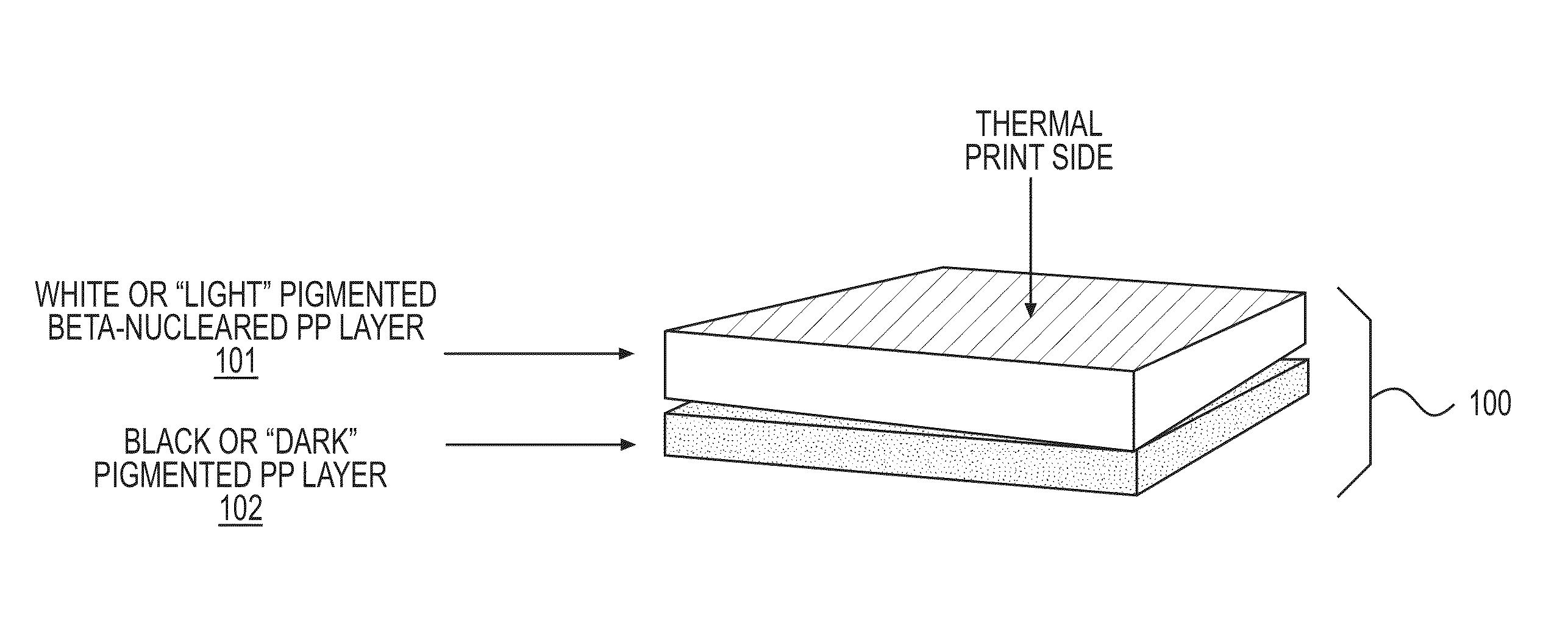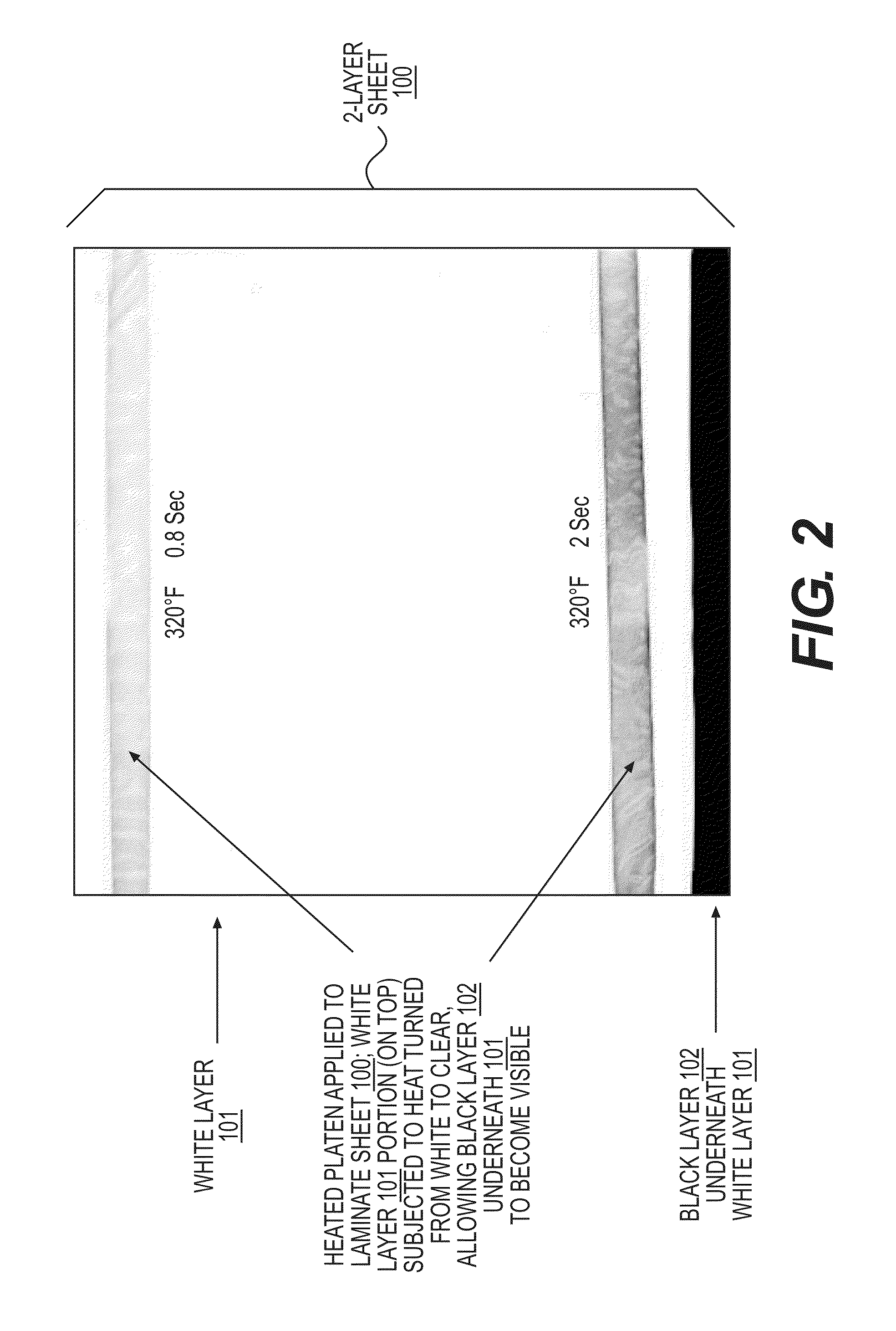Non-chemical thermally printable film
a non-chemical, thermally printable technology, applied in the direction of thermography, other domestic articles, synthetic resin layered products, etc., to achieve the effect of durable and resistant to fading
- Summary
- Abstract
- Description
- Claims
- Application Information
AI Technical Summary
Benefits of technology
Problems solved by technology
Method used
Image
Examples
example 1
[0057]A two-layer mono-axially oriented film (MOPP) was made using a mono-axial orientation process with two distinct coextruded layers. The two layers comprised a black pigmented layer B and a white opaque beta-crystalline nucleated layer A and the laminate film appeared dark colored on one side (layer A) and light colored on the opposite side (layer A) after orientation. Layer A was composed of about 98.2 wt % of an impact propylene copolymer Braskem TI4015F and about 1.8 wt % of a beta-crystalline nucleating masterbatch Mayzo MPM1112. Layer B was composed of about 94 wt % Braskem TI4015F and about 6 wt % of a carbon black pigment masterbatch Ampacet 191114. The coextruded film substrate was made via co-extrusion through a die, cast on a temperature controlled drum at 104° C., oriented in the machine direction through a series of heated and differentially sped rolls at various orientation draw ratios (MDX) of about 4:1. Once oriented the clear layer B appeared whitish and opaque d...
example 2
[0058]Example 1 was substantially repeated except that the amount of Mayzo MPM1112 beta-nucleating masterbatch was about 2.2 wt % and about 97.8 wt % Braskem TI4015F in layer A.
example 3
[0059]Example 1 was substantially repeated except that the amount of Mayzo MPM1112 beta-nucleating masterbatch was about 1.2 wt % and about 98.8 wt % Braskem TI4015F in layer A; the amount of carbon black Ampacet 191114 was about 9 wt % and about 91 wt % Braskem TI4015F in layer B; and the overall thickness was about 100 μm with the A layer about 90 μm and the B layer about 10 μm.
PUM
| Property | Measurement | Unit |
|---|---|---|
| pore size | aaaaa | aaaaa |
| porosity | aaaaa | aaaaa |
| diameters | aaaaa | aaaaa |
Abstract
Description
Claims
Application Information
 Login to View More
Login to View More - R&D
- Intellectual Property
- Life Sciences
- Materials
- Tech Scout
- Unparalleled Data Quality
- Higher Quality Content
- 60% Fewer Hallucinations
Browse by: Latest US Patents, China's latest patents, Technical Efficacy Thesaurus, Application Domain, Technology Topic, Popular Technical Reports.
© 2025 PatSnap. All rights reserved.Legal|Privacy policy|Modern Slavery Act Transparency Statement|Sitemap|About US| Contact US: help@patsnap.com



